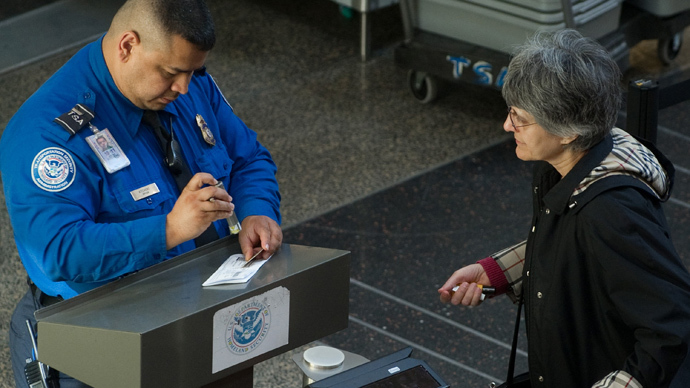RT
December 4, 2013

The names of nearly three-quarters of a million individuals have been secretly added to watch lists administered by the United States government, but federal officials are adamant about keeping information about these rosters under wraps.
A report by the New York Times’ Susan Stellin published over the weekend attempted to shine much-deserved light on an otherwise largely unexposed program of federal watch lists, but details about these directories — including the names of individuals on them and what they did to get there — remain as elusive as ever.
More than 12 years after the terrorist attacks of September 11, 2001, federal agencies continue to keep lists on hand containing names of individuals of interest: people who often end up un-cleared to enter or exit the US due to an array of activity that could be considered suspicious or terrorist-related to government officials.
In 2008, the American Civil Liberties Union claimed that an Inspector General of the Department of Justice report found at least 700,000 individual names on the database maintained by the Terrorist Screening Center, the Federal Bureau of Investigation sub-office tasked with overseeing the “single database of identifying information about those known or reasonably suspected of being involved in terrorist activity.” Five years later, that number of suspicious persons is reportedly close to what it was at the time. Half-a-decade down the road, however, Americans and foreign nationals who end up on the government’s radar are offered little chance to find out how they ended there, or even file an appeal.
According to some, that’s just the start of what’s wrong with these lists.
“If you’ve done the paperwork correctly, then you can effectively enter someone onto the watch list,” SUNY Buffalo Law School associate professor Anya Bernstein told Stellin for this weekend’s report. What’s more, though, according to Bernstein, is that “There’s no indication that agencies undertake any kind of regular retrospective review to assess how good they are at predicting the conduct they’re targeting,” suggesting that anyone can be targeted and added to such a list with little oversight to protect them.
“When you have a huge list of people who are likely to commit terrorist acts, it’s easy to think that terrorism is a really big problem and we should be devoting a lot of resources to fighting it,” Bernstein added. With almost no transparency and outrages aplenty, though, she argues that the government’s watch lists are largely flawed and can erroneously ruin an innocent person’s life.
 Daily Stormer The Most Censored Publication in History
Daily Stormer The Most Censored Publication in History


